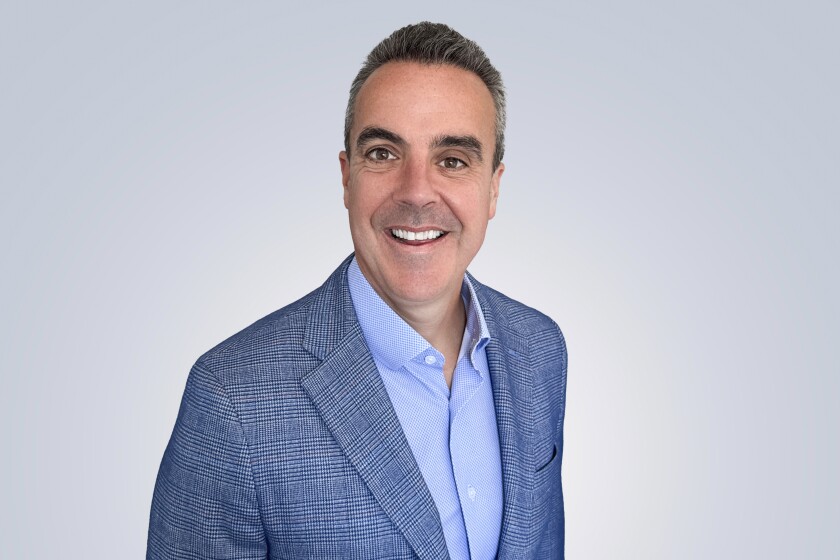The U.S. Small Business Administration, in conjunction with the Treasury Department, released a loan forgiveness application for the SBA’s troubled Paycheck Protection Program, along with detailed instructions for the application.
The form and instructions that were released Friday tell borrowers how they can apply for forgiveness of their PPP loans, under the Coronavirus Aid, Relief, and Economic Security Act, or CARES Act. The SBA also plans to issue regulations and guidance soon to provide further help to borrowers as they fill out their applications, and to give lenders guidance on their responsibilities.
Rebecca Liebman is co-founder & CEO of LearnLux, the leading workplace financial well-being provider.
Bryan Brizzi is a seasoned technology executive and transformation leader with over two decades of experience driving digital innovation in the insurance industry. As Chief Digital Officer at Crum & Forster, he leads the modernization of the Surplus & Specialty IT organization, delivering scalable, technology-driven solutions that enhance underwriting efficiency, reduce technical debt, and optimize business processes.
Rick Hirsh is a seasoned executive with 30+ years of experience leading management, sales, finance, and operations to drive growth in technology and software-enabled B2B services. He currently leads as CEO of Beneration, an insurtech platform built to cut waste and simplify the most error-prone parts of benefits billing for employers. Rick has driven organic growth, completed over a dozen acquisitions, and led four successful investor exits. Previously honored as Ernst & Young Entrepreneur of the Year, Rick and his companies have been recognized on the Inc. 500, Deloitte's Fast 50, and CRN Solution Provider 500.
The PPP was included as part of the CARES Act that Congress passed in response to the novel coronavirus pandemic. It aimed to provide funding to small businesses, giving them SBA-backed loans that the federal government would ultimately forgive as long as they kept their employees on the payroll for eight weeks.
The program has been a source of controversy, however, as many small businesses were shut out of the program and much of the money went to larger companies. The initial $349 billion in funding for the PPP quickly ran out, and Congress needed to approve an additional $320 billion in funding last month. The fast-changing guidance from the SBA, the Treasury and the IRS about the conditions and terms for loan forgiveness and business expense deductibility have deterred many businesses from applying for the funds, however.
The form and instructions for eagerly awaited application include a number of measures aimed at easing compliance burdens and the process for borrowers, including:
- Options for borrowers to compute the payroll costs using an “alternative payroll covered period” that fits in with borrowers’ regular payroll cycles;
- Flexibility to include eligible payroll and non-payroll expenses paid or incurred during the eight-week period after business get their PPP loan;
- Step-by-step instructions on how to do the calculations required by the CARES Act to confirm eligibility for loan forgiveness;
- “Borrower-friendly” implementation of statutory exemptions from loan forgiveness reduction based on rehiring by June 30;
- Addition of a new exemption from the loan forgiveness reduction for borrowers who have made a good-faith, written offer to rehire workers that was declined.
Aprio LLP, a Top 100 Firm, pointed out in an email to clients that the previously issued regulations said the covered period must begin on the date of which the loan proceeds are disbursed. The new application offers borrowers with a biweekly (or more frequent) payroll cycle the option of using an alternative payroll covered period. They can elect to calculate payroll costs using the eight-week (56-day) period that starts on the first day of the first pay period following the PPP loan disbursement date.
The PPP was created by the CARES Act to provide forgivable loans to eligible small businesses to keep American workers on the payroll during the COVID-19 pandemic. The application and instructions can help small businesses seek forgiveness at the end of the eight-week covered period, which starts with the disbursement of their loans.

The American Institute of CPAs said the guidance still leaves many questions unanswered, and further guidance and flexibility is needed. While the application form does help address some administrative items such as providing additional clarity around “costs incurred but not paid” during the covered period, the AICPA said some major issues remain. The institute argues that small businesses need more flexibility on when the eight-week period should begin or need to have the covered period extended past eight weeks.
“It’s clear the application form and instructions provided yesterday are not enough,” said Erik Asgeirsson, president and CEO of CPA.com, the AICPA’s business and technology arm, in a statement Saturday. “Some of the most pressing issues are not addressed and in other areas it appears new questions have arisen.”
To help businesses and their accountants with the PPP, the AICPA has created a loan forgiveness calculator to reflect the SBA guidance and additional recommendations from the institute, in consultation with an AICPA-led small business funding coalition whose members offer services and support to businesses.
“The AICPA loan forgiveness calculator provided more support and details than the SBA loan forgiveness application, and we will continue to encourage Treasury and SBA to leverage our recommendations,” said AICPA executive vice president of firm services Mark Koziel in a statement. “We will now reconcile our calculator with this form and publish an updated version with additional recommendations and direction for our 44,000 CPA firms."



